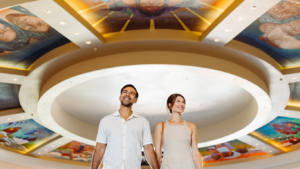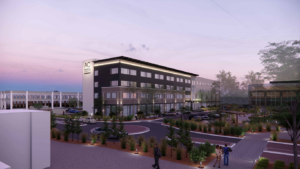Tourism is a vibrant and diverse industry, and I have been fortunate to be part of it for the past 25 years. This exciting industry encompasses culture, history, natural wonders, state parks, sports, resorts, spas, restaurants and shopping. And it’s supported by a variety of other industries such as laundry services, food services and transportation — all of which help to keep Arizona’s economy moving forward. As one of the state’s major economic generators, contributions by the travel and tourism industry have been immense. In 2007, more than 35 million visitors traveled to the Grand Canyon State and contributed $19.3 billion to the state’s economy. Additionally, tourism has generated millions in tax revenue and has employed directly and indirectly thousands of residents.
Twenty-five years ago, tourism wasn’t nearly as lucrative. There were fewer than 20,000 hotel rooms throughout the Valley, and no spas. Visitors came to Arizona because of its scenic beauty and outdoor adventures. But the Valley, more often than not, served as a gateway to other Arizona communities and attractions. Phoenix was rarely seen as the “main” attraction for a family vacation. In 1984, Phoenix Sky Harbor International Airport had only two terminals available for travelers. The freeway infrastructure consisted mainly of the I-10 and I-17 freeways. And the Phoenix Suns were the only major professional sports team playing in the Valley.
However, because of the dynamic growth and development of the Valley, we have been able to greatly expand our tourism marketing efforts. In addition to the state’s signature beauty, outdoor adventures and Wild West history, we now market arts and culture, culinary opportunities, resorts with spas, and plenty of great shopping.
What the Valley now offers has helped define the Phoenix area and Arizona as premier travel destinations. To accommodate the growing number of domestic and international travelers, the airport has added Terminal 4, increasing passenger traffic to 40,000 travelers annually. The addition of the loops 101 and 202 has eased traffic, and the Valley now boasts 55,000 hotel rooms. The new Phoenix Convention Center has more than tripled in size, expanding from 300,000 square feet to an incredible 1 million square feet, allowing for more conventions to take place.
The Phoenix Suns now have plenty of company — the Arizona Cardinals, the Arizona Diamondbacks and the Phoenix Coyotes — that bring visitors to the state. We have also become a featured destination on the national sports scene by hosting two Super Bowls, Cactus League spring training, the FBR Open and the Fiesta Bowl, including the Bowl Championship Series.
While we can be proud of the way tourism has evolved, like many other industries we have been hit with challenges. As a result of the struggling economy, people are traveling less. The unfortunate misconception about corporate meetings and events has had a negative impact on the industry, as well. However, it’s important to understand that although people are traveling less they are traveling closer to home, giving us opportunities to promote the wonders of Arizona to our own residents and neighbors.
The tourism industry is resilient and will continue to be so. It is the only export industry that drives revenue to all 15 Arizona counties, and is second only to microelectronics in generating earnings that benefit Arizona’s residents. The earnings generated from tourism are spread throughout the state and have shown consistent growth, helping to create a stabilizing effect on the Arizona economy. It’s vital to our economy to continue promoting Arizona as a vacation destination.
We are fortunate to live in such an incredibly diverse state with breathtaking scenery, culture and heritage, sports, fine dining and shopping. It’s what people from thousands of miles away want to experience.




